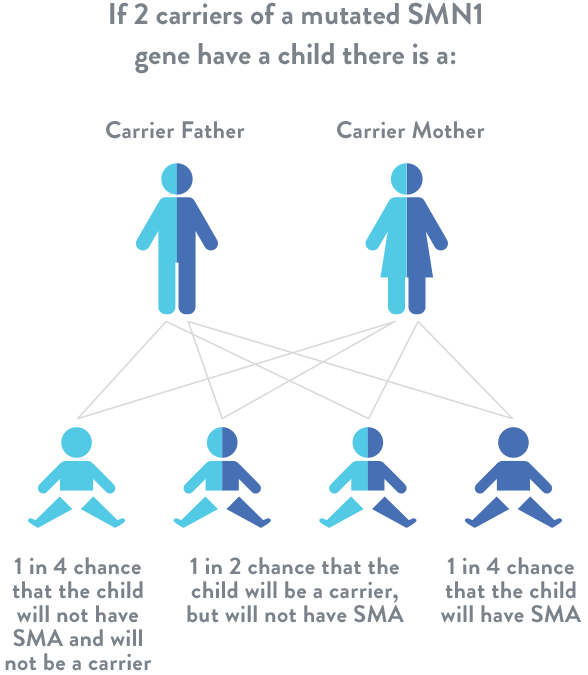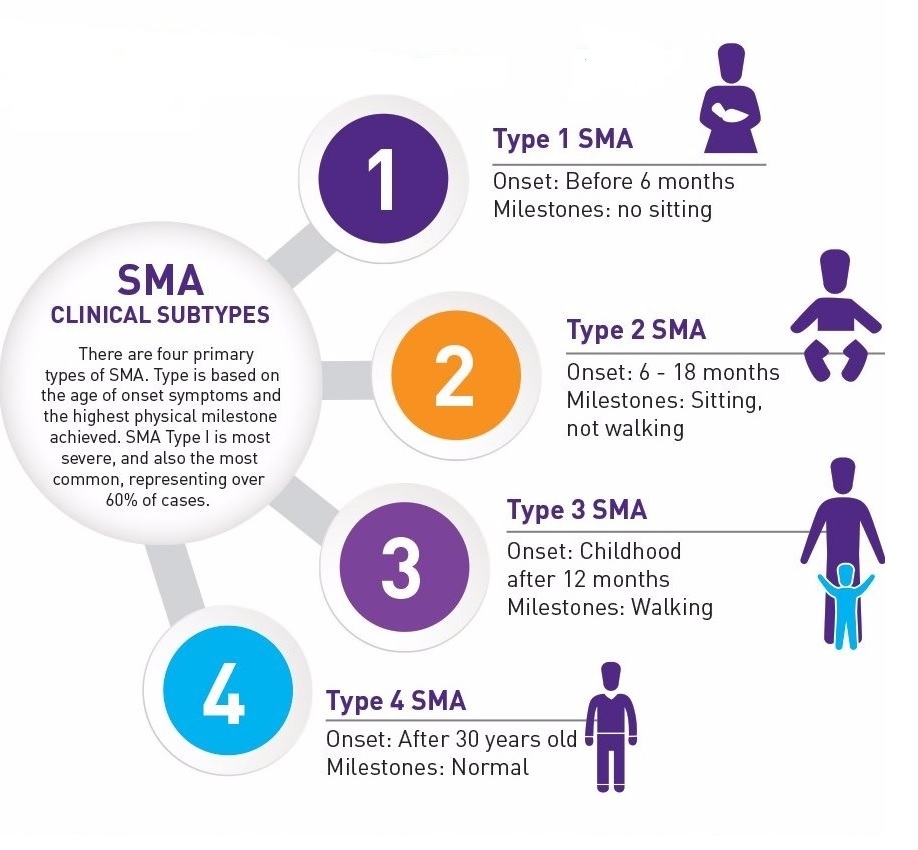Spinal Muscular Atrophy treatment using the possibilities of regenerative medicine
What is SMA?

Spinal muscular atrophy (SMA) is a genetic disorder that develops due to a defect in the SMN1 (survival motor neuron protein) gene and leads to gradually increasing muscle weakness and wasting. It is estimated that one in every 6,000 to 10,000 children worldwide is born with SMA.
The disease affects motor neurons in the anterior horn of the spinal cord, which directly control the skeletal muscles of the body. Without an adequate SMN protein, motor spinal cord neurons start to shrink and die. When this happens, the child’s brain is not able to control the voluntary muscles of the body, especially the muscles of the arms and legs, as well as the head and neck. When nerve cell function deteriorates, the connection between the brain and muscles gradually breaks down. Muscles become weak and exhausted; patient gradually loses motor functions. This affects movements such as walking, crawling, head and neck control, swallowing and breathing.
People of any race or gender may be affected by spinal muscular atrophy. One out of every 40 people carries a gene that causes SMA. A child with two gene carriers has a 25 % chance of being born with SMA.
Types of SMA
There are 4 types of SMA. This classification is determined by developmental milestones that the child experienced at the time of the disease onset.
Patients of all SMA types are susceptible to frequent respiratory infections.
 Type 1 (severe). It is called Verdig-Hoffmann disease. This is the most serious and most common type of SMA. This usually manifests itself at birth or in the first few months (0-6 months). Type 1 SMA progresses rapidly, muscle weakness leads to frequent respiratory infections and death by the age of 2. Children with type 1 SMA can never sit.
Type 1 (severe). It is called Verdig-Hoffmann disease. This is the most serious and most common type of SMA. This usually manifests itself at birth or in the first few months (0-6 months). Type 1 SMA progresses rapidly, muscle weakness leads to frequent respiratory infections and death by the age of 2. Children with type 1 SMA can never sit.
Type 2 (intermediate). Symptoms usually appear between the ages of 7 and 18 months. The disease affects more legs than arms. Children with type 1 SMA can never stand. Life expectancy can vary from early childhood to adulthood, depending on the severity of the patient's condition.
Type 3 (mild). It is called Kugelberg-Welander or juvenile SMA. Symptoms may first appear over a wide range of years, from 18 months to early adulthood. Patients can stand and walk, but can have muscle weakness and experience difficulties when getting up from a sitting position. In most patients, life expectancy is close to normal.
Type 4 (adult). Symptoms of this rare SMA usually appear in the 2nd or 3rd decade of life. Patients can usually walk, but experience slowly progressing muscle weakness.
Symptoms of SMA
SMA symptoms observed in infants are the following:
- the baby has breathing problems due to lack of oxygen supply
- it is difficult to feed the baby because of swallowing problems
- flexible limbs and weak torso movement
- breathing problems
- weakness is deteriorated
SMA symptoms observed in children are the following:
- frequent respiratory infections that become more severe over time
- posture violation
- nasal speech
- slowly progressive muscle weakness
Treatment for SMA
Although SMA remains an incurable disease, fetal stem cell treatment performed in UCTClinic provides a possibility for the patient and his/her caregivers for a better life. Our treatment helps to stop or significantly slow the progression of the disease, prolong life expectancy and improve the quality of life of the patient and patient's family. According to our statistics, 75% of our patients receive a long-lasting remission period. 92% of patients have significant improvements in overall condition.
Spinal muscular atrophy is characterized by the development of a chronic degenerative process in the anterior horn cells of the spinal cord, anterior roots and peripheral nerves. In the anterior roots there is a breakdown of myelin, loss of axons and proliferation of connective tissue. In this case, a trophism violation of the muscles occurs, accompanied by their degenerative-dystrophic changes, thinning and impaired contractile function. Therapy with fetal stem cells in our clinic is focused at regeneration of nervous and muscle tissue. Stem cells have the ability to turn into any cells and tissues affected by the disease. The same in case of SMA: fetal stem cell treatment promotes the regeneration of motor neurons and damaged muscle tissue.
For the detailed evaluation of your child's case, please, send available medical reports to our email infocenter@cell-treatment.com
